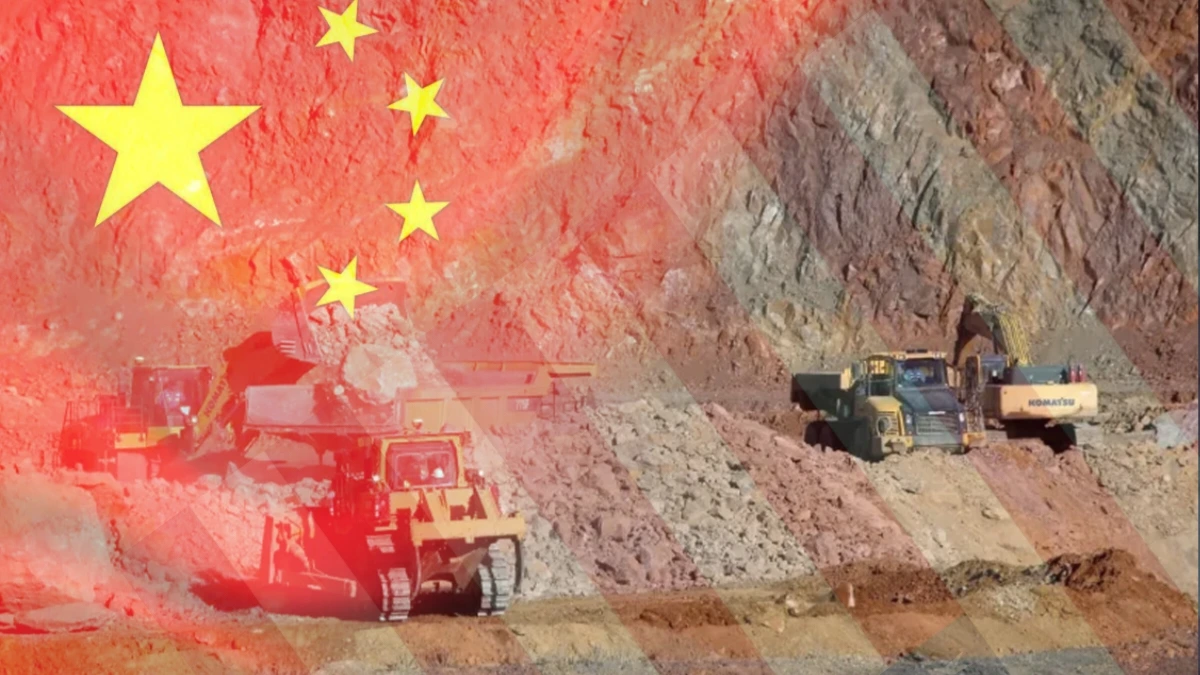BEIJING — China’s state media on Thursday published a seven point rebuttal to US criticism over its new rare earth export controls, pushing back against accusations that the measures amount to an economic power play.
The exchange marks the latest flashpoint in a widening dispute between Washington and Beijing over critical minerals and trade policy, weeks before an expected meeting between President Donald Trump and Chinese leader Xi Jinping.
US Trade Representative Jamieson Greer on Wednesday described China’s restrictions as “a global supply chain power grab,” suggesting Beijing could avoid renewed tariffs on Chinese goods by halting the rules before they take effect on November 8.
In response, China’s People’s Daily and Global Times defended the policy, asserting that the export licensing regime aligns with international norms and was communicated to Washington in advance.
The rare earth dispute adds to a series of trade and technology clashes between the world’s two largest economies. Rare earth elements a group of 17 minerals essential to manufacturing electric vehicles, smartphones and advanced weaponry have long been viewed as a strategic asset by both nations.
The conflict intensified following a September phone call between Trump and Xi, during which both leaders accused each other of escalating tensions.
Since then, Washington and Beijing have traded accusations over unfair trade practices, export restrictions, and security concerns related to critical technologies.
Beijing attributes the recent strain to the US Commerce Department’s decision in late September to expand its “Entity List,” targeting companies accused of circumventing export bans on semiconductor equipment.
Washington, however, points to China’s rare earth measures as the trigger for the latest breakdown in dialogue. Trump has called Beijing’s move “shocking,” warning that it could destabilize global supply chains.
Trade analysts said the standoff highlights a deeper struggle over technological sovereignty and control of strategic resources.
“Both sides are using export controls as tools of leverage,” said Mei Ling Zhang, a senior fellow at the Center for Strategic Trade Studies in Singapore.
The US wants to secure semiconductor dominance, while China is reinforcing its position in critical minerals. These are two halves of the same competition.
John Dwyer, an energy policy expert at the Brookings Institution, noted that China supplies roughly 70 percent of the world’s processed rare earths.
Beijing knows how crucial these materials are, Dwyer said. “Even modest export restrictions can send shockwaves through global manufacturing sectors.”
According to Dwyer, the rare earth controls could also serve as a “calibrated warning” to Washington, showing that Beijing is prepared to use its dominance in the sector as a negotiating tool ahead of upcoming trade talks.
In its response, People’s Daily emphasized that China’s new control list covers about 900 items, compared to the United States’ 3,000-item export control catalogue.
The publication argued that the US has “long overstated national security concerns” and used restrictive trade measures against Chinese companies.
Export controls have been a recurring feature of US policy since the 1950s, particularly concerning defense related technologies.
In recent years, Washington has tightened regulations to prevent the sale of semiconductors and AI components to Chinese firms using American technology. Meanwhile, Beijing maintains that its licensing system mirrors international standards.
“Implementing such export controls is consistent with global practice,” one of the seven infographics published by People’s Daily stated, repeating a line Chinese officials have used since the measures were announced.
According to the US Geological Survey, global demand for rare earth elements is projected to grow by nearly 25 percent over the next decade, driven by the renewable energy and electric vehicle industries.
Analysts warn that prolonged trade friction could disrupt supply chains for these emerging sectors. In Baotou, Inner Mongolia China’s main rare earth production hub workers said they were monitoring the situation closely.
“We’ve seen these trade tensions before, but this time it feels different,” said Liu Wen, a plant supervisor at a local processing facility.
“Orders from some overseas clients have already slowed because of uncertainty.” In Washington, business groups expressed concern that escalating controls on both sides could hurt manufacturers.
“American firms depend heavily on Chinese rare earths for clean energy and defense applications,” said Rachel Mendez, spokesperson for the US Manufacturing Alliance. “Policymakers need to find a balance that safeguards national interests without stifling innovation.”
A European diplomat stationed in Beijing, speaking on condition of anonymity, described the situation as “a dangerous feedback loop.” He said, “Each side views the other’s actions as provocation, leading to measures that deepen mistrust.”
Both governments are expected to revisit trade issues at a summit planned for later this year, though neither side has confirmed the agenda. Analysts believe the rare earth dispute will feature prominently.
Unless there’s a framework for transparency and consultation, we’ll continue to see these tit for tat measures, Zhang said. “It’s not just about minerals it’s about control over the next generation of technologies.”
Some experts see limited room for compromise before November 8, the date China’s new export rules take effect. “The timing is deliberate,” Dwyer said. “Beijing is signaling strength while leaving space for negotiation.”
As Washington and Beijing trade accusations, industries from clean energy to electronics are bracing for ripple effects.
With both sides framing their positions as defensive and lawful, the rare earth dispute underscores the enduring fragility of US China trade relations and the growing strategic importance of the minerals that power the modern economy.

